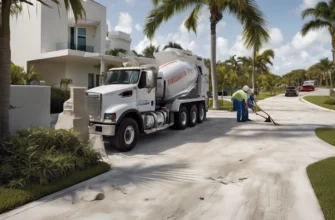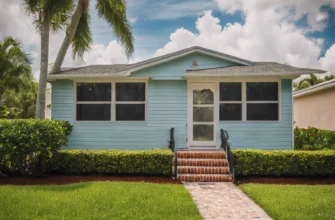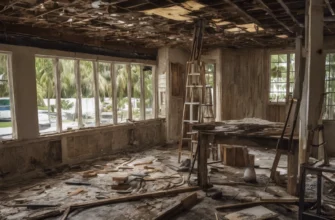- Understanding Drywall Repair Costs for South Florida Homeowners
- What is Drywall Repair?
- Common Types of Drywall Damage
- Factors Influencing Repair Costs
- 1. Extent of the Damage
- 2. Type of Repair Needed
- 3. Location of the Damage
- 4. Contractor Experience and Labor Costs
- 5. Geographic Location
- Estimating Typical Costs for Drywall Repair in South Florida
- Cost Ranges for Common Repairs
- DIY vs. Hiring Professionals
- Pros of DIY
- Cons of DIY
- Pros of Hiring Professionals
- Cons of Hiring Professionals
- Choosing the Right Contractor
- 1. Get Multiple Estimates
- 2. Check Credentials
- 3. Read Reviews and Ask for References
- 4. Discuss Materials and Techniques
- 5. Service Guarantees
- Preventive Measures for Drywall Damage
- 1. Manage Humidity Levels
- 2. Regular Inspections
- 3. Proper Ventilation
- 4. Address Leaks Promptly
- Conclusion
Understanding Drywall Repair Costs for South Florida Homeowners
When it comes to maintaining a home, few tasks spark as much discussion and potential dread as drywall repair. Whether you’re dealing with water damage, mold, or simply the wear and tear that comes with years of family life, understanding the costs associated with drywall repair is crucial. For homeowners in South Florida, the humid climate and the potential for hurricanes introduce unique challenges that can impact these costs. This article aims to break down everything you need to know about drywall repair costs, factors that influence those costs, and what you can expect from the repair process, all while keeping your budget in mind.
What is Drywall Repair?
Drywall repair encompasses a variety of tasks aimed at restoring the integrity and appearance of interior wall surfaces. The most common reasons for drywall repair include:
– Cracks and holes from everyday wear and tear
– Water damage due to leaks or flooding
– Mold issues, particularly in humid climates like South Florida
– Damage from pests or rodents
– Cosmetic updates, like texturing or repainting
Understanding these factors can help you estimate the repairs needed and what they might cost.
Common Types of Drywall Damage
To truly grasp the potential costs of drywall repair, you first need to understand the types of damages you’re likely to encounter. Here’s a breakdown:
| Type of Damage | Description |
|---|---|
| Small holes | Caused by nails, screws, or minor impacts. Typically easy to repair. |
| Large holes | Resulting from accidents or installations (like TV mounts). Require patching or replacement. |
| Water damage | Common in areas prone to leaks or high humidity; can lead to mold growth. |
| Mold | Typically related to water damage, mold issues require careful treatment and replacement of affected drywall. |
| Cosmetic damage | Includes textures or finishes that may need to be renewed or updated. |
Each type of damage presents its own challenges and associated costs.
Factors Influencing Repair Costs
When it comes to the numbers, a myriad of factors can influence the final cost of your drywall repair. Understanding these can help you make informed choices and manage your budget more effectively.
1. Extent of the Damage
One of the most significant factors is the extent of the damage. As illustrated in the table above, small holes are much less expensive to repair than large holes. Likewise, minor water damage may only require patchwork, whereas extensive damage that necessitates full sheet replacement will drive costs significantly higher.
2. Type of Repair Needed
Different types of repairs come with their own price tags. For example, repairing a small hole may cost you anywhere from $50 to $150, especially if you’re doing it yourself. However, if mold-remediation is necessary, costs can skyrocket due to the required safety measures and specialized treatments.
3. Location of the Damage
The location of the damage within your home can also have implications for cost. For instance, a hole in a high-traffic area like a living room may require more extensive cosmetic work to blend in with the surrounding wall than a hole in a less visible space, like a basement. Additionally, lower areas of the wall, particularly in South Florida where flooding can be an issue, may be more susceptible to recurring damage.
4. Contractor Experience and Labor Costs
Hiring a contractor can also significantly affect your overall costs. In South Florida, labor costs can vary widely based on the contractor’s experience and demand for services. Well-established contractors may charge a premium for their expertise, but it’s important to factor in the potential for better quality work.
5. Geographic Location
South Florida is diverse, showcasing a range of socioeconomic statuses and home prices. Consequently, drywall repair costs can vary from Miami to Fort Lauderdale or Palm Beach. Urban areas where the cost of living is higher typically see inflated service prices compared to suburban areas.
Estimating Typical Costs for Drywall Repair in South Florida
So, what can you expect when it comes to actual dollar amounts? Let’s break down some common repair scenarios.
Cost Ranges for Common Repairs
Here’s a simple list with estimated costs for common drywall repairs in South Florida:
- Small Holes (dime-sized): $50 – $150
- Medium Holes (penny-sized): $150 – $300
- Large Holes (fist-sized): $300 – $500
- Water Damage Repair: $100 – $1,000 (depending on extent)
- Mold Remediation: $500 – $3,000 (or more, if extensive)
These costs provide a general framework, but the specifics of your project can certainly influence your final bill.
DIY vs. Hiring Professionals
One major decision homeowners face when it comes to drywall repair is whether to tackle the project themselves or hire a professional. Each option has its merits, and it’s crucial to weigh them carefully based on your situation.
Pros of DIY
– Cost Savings: Doing it yourself can save you labor costs, which often make up a significant portion of repair fees.
– Control Over the Project: You dictate the timeline and method, allowing for more personal input.
– Skill Building: Tackling home repairs can enhance your DIY skills for future projects.
Cons of DIY
– Time-Consuming: Repairs can take longer than expected, especially if you lack experience.
– Quality Risks: Without expertise, the finished product may not meet your expectations, leading to additional repairs later.
– Potential Code Violations: Certain repairs may require permits or adherence to local building codes.
Pros of Hiring Professionals
– Expertise: Professionals come with experience and the skills necessary for high-quality repairs.
– Time-Efficient: Hiring a contractor can save you time, resulting in faster repairs.
– Guaranteed Work: Many contractors offer warranties or guarantees on their work.
Cons of Hiring Professionals
– Cost: Labor costs can significantly inflate the final bill.
– Less Control: You may have less say in the timeline and methods used.
These pros and cons serve as a foundation for a balanced decision.
Choosing the Right Contractor
If you decide to go with a professional, selecting the right contractor is essential. Here are some tips to help you find the best possible match for your drywall repair needs.
1. Get Multiple Estimates
Don’t settle for the first estimate. Reach out to several contractors and compare their quotes, timelines, and approach. This practice not only ensures that you receive a fair price but also helps you understand different approaches to your repair.
2. Check Credentials
Verify that your contractor holds proper licensing and insurance. This not only protects both parties but ensures peace of mind during the repair process.
3. Read Reviews and Ask for References
Look for online reviews and testimonials. Don’t hesitate to ask contractors for references and even visit prior clients’ homes to inspect their work personally.
4. Discuss Materials and Techniques
Ensure you understand the materials and techniques that your contractor recommends. The right materials significantly affect the quality and lifespan of the repair.
5. Service Guarantees
Inquire whether the contractor offers any guarantees. A reliable contractor should stand by their work and offer solutions in the event of future issues.
Preventive Measures for Drywall Damage
As any homeowner knows, prevention is often the best medicine. Here are some tactics you can implement to mitigate drywall damage in your home:
1. Manage Humidity Levels
In South Florida, high humidity can lead to mold growth and drywall deterioration. Invest in dehumidifiers or HVAC systems with built-in humidity control to maintain optimal levels in your home.
2. Regular Inspections
Conduct routine checks around your home to identify signs of damage early. Catching problems at their inception can help reduce repair costs in the long run.
3. Proper Ventilation
Make sure bathrooms, kitchens, and laundry rooms are adequately ventilated to prevent moisture buildup. Installing exhaust fans can alleviate some of the humidity-related issues that often afflict drywall.
4. Address Leaks Promptly
Any signs of leaks or water damage should be addressed immediately. Repairing roof leaks or faulty plumbing can prevent moisture from seeping into your drywall.
Conclusion
Drywall repair is an inevitable part of homeownership, particularly for residents in South Florida. By understanding the various aspects involved—from types of damage to cost estimates—you can take informed steps to manage this essential part of maintenance. Whether you choose to take on the repairs yourself or hire a professional, an informed homeowner is a powerful homeowner. Keeping the unique climate of South Florida in mind, addressing drywall issues promptly and effectively will protect your home and its value for years to come. With a proactive approach, your walls can remain as fresh and welcoming as the day you moved in.
Ultimately, whether small or large, important or insignificant, every repair adds to the story of your home. Embrace the process, seek out professional advice when needed, and take pride in the knowledge that you’re maintaining a safe, comfortable, and beautiful space for you and your family.







